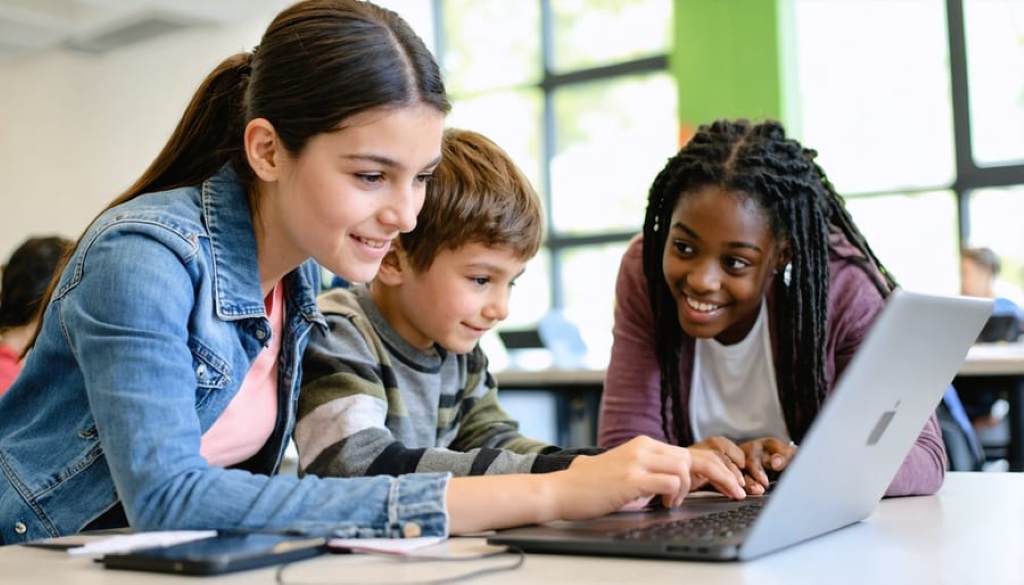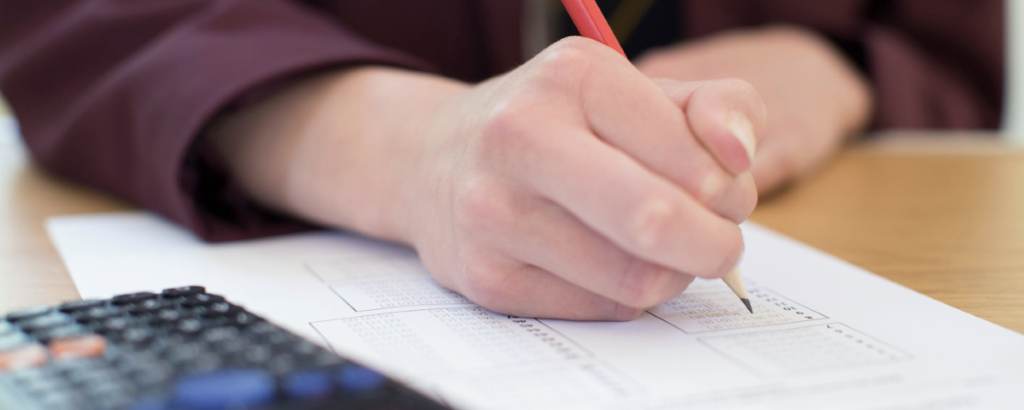What are classroom strategies? Exactly understood by classroom strategies are the set of educational strategies, methods, tasks, etc., which the teacher uses daily in the classroom to explain, make understand, motivate, stimulate, improve teaching-learning processes, etc.
In our literature, it is relatively easy to find documentation regarding the so-called learning strategies or learning techniques, but really about the classroom strategies, as such, there is a very little bibliography. In order to properly develop an educational intervention, many things are needed, including a broad set of strategies that facilitate our teaching work.
Importance of classroom strategies
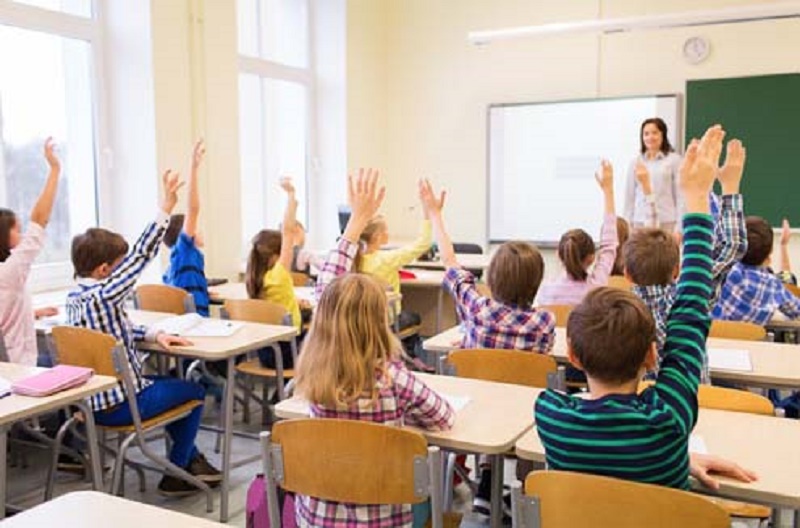
Frequently the beginning teacher encounters such difficulties, does not know exactly how to motivate his students, how to interact in the classroom, how to relate to his students, maintain a certain discipline or resolve various conflicts.
It is also possible to find professionals who, after many years of experience, have acquired habits that are not the most appropriate (although they are sometimes effective).
Based on quality teaching, the functions of this new role being the following:
a) Manager: class group manager, performs and maintains student records, and attends to problems that arise within the class.
b) Executive: He/she makes decisions about fundamental school problems.
c) Guidance: acts as a specialist in the presentation of instructional content, provides activities, feedback and questions adjusted to the level of students.
d) Strategist: acts as a true thinker, specialist in decision making, anticipate difficulties, know the structures of knowledge.
e) Expert: has a rich knowledge base that will allow you to decide in each case what is most relevant within the various subjects.
f) Support person: must provide help and support to students for the completion of tasks.
This is the cornerstone of a quality education, the key is the professionalism of the teacher, and to achieve that professionalism the teacher needs strategies on which to support his intervention.
We can classify these strategies based on the following fields:
- The learning strategies.
- The learning styles.
- Teaching styles
- The motivation.
- The interaction in the classroom.
- The discipline.
- The resolution of conflicts.
From this classification, we will present various strategies and ways of acting that we consider appropriate.
1. THE IMPORTANCE OF LEARNING STRATEGIES

The learning strategies according to Nisbet and Shuckersimith (1987) are executive processes by which the skills are chosen, coordinated and applied. They are linked to meaningful learning and “learning to learn”.
The approximation of teaching styles to the learning style requires as Bernard (1990) points out, that teachers understand the mental grammar of their students derived from previous knowledge and the set of strategies, scripts or plans used by the subjects in the execution of Tasks.
Within the broad framework of learning strategies we can establish the following typology:
Dispositional and support strategies: They are the ones that put the progress of the process and help sustain the effort. There are two types:
– Affective-emotional and self-management strategies: they integrate motivational processes, appropriate attitudes, self-concept and self-esteem, the feeling of competence, etc.
– Context control strategies: refer to the creation of adequate environmental conditions, control of space, time, material, etc.
Search strategies, collection and selection of information: they integrate everything related to the location, collection and selection of information. The subject must learn, to be a strategic learner, what are the sources of information and how to access them, criteria for selecting information, etc.
Strategies for processing and using the acquired information:
– Attentional strategies: aimed at controlling attention.
– Strategies for coding, elaboration and organization of information: control the processes of restructuring and personalization of information through tactics such as underlining, epigraphy, summary, outline, concept maps, synoptic tables, etc.
– Repetition and storage strategies: control the short and long term retention and memory processes through tactics such as copying, repetition, metrotechnical resources, establishments with meaningful connections, etc.
– Personalization and creativity strategies: they include critical thinking, the re-elaboration of information, personal creative proposals, etc.
– Information retrieval strategies: control recall and recovery processes, through tactics such as recall exercises, retrieval of information following the path of related concepts, etc.
– Strategies for communication and use of the information acquired, make it possible to efficiently use the information acquired for academic tasks and everyday life through tactics such as the preparation of reports, the synthesis of what has been learned, the simulation of exams, self-questions, application and transfer exercises, etc.
Metacognitive strategies, of regulation and control: they refer to the knowledge, evaluation and control of the different strategies and cognitive processes, according to the objectives of the task and depending on the context. They integrate:
– Knowledge: of the person, the available strategies, the skills and limitations, the objectives of the task and the context of the application.
– Control:
§ Planning strategies: work, study, exams, etc.
§ Evaluation, control and regulation strategies: they involve verification and assessment of one’s performance, control of the task, correction of errors and distractions, redirection of effort, rectifications, self-reinforcement, development of the feeling of self-efficacy, etc.
Here are outlined the learning strategies that could be carried out to facilitate the assimilation of new knowledge in our students, and also various tactics for it.
2. THE LEARNING STYLES
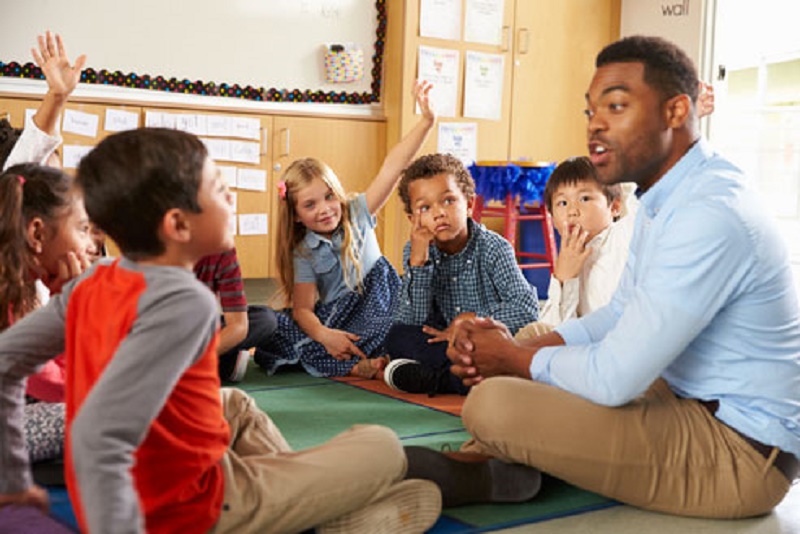
We understand by learning style the set of habits, forms or styles of each person to act or think in each situation.
They are the characteristic modes by which an individual processes information, feels and behaves in learning situations (Smith, 1988).
Being the learning style of each person we can speak of different learning styles, the learning styles are not immovable, they are relatively stable, that is, they can change. They are susceptible to improvement and, in addition, they must always be improved.
By controlling them, one style or another can be used as required by the situation where it has to be applied. The student, with the guidance of the teacher, learns to discover what are the features that outline their own style and, at the same time, identify which of those features should be used in each learning situation to obtain better results.
What advantages does it offer to know and strengthen the learning styles of our students?
– We can better guide the learning of each student if we know how he learns. That is, the selection of our teaching strategies and teaching style will be more effective.
– The application in the classroom of learning styles is the most scientific way we have to individualize instruction.
– If our educational goal is to get the student to learn to turn on, then we must bet to help him learn and improve his own learning styles.
This will allow the student, among other things, to know:
– How to control your own learning.
– How to diagnose your strengths and weaknesses as a student.
– How to describe your style or styles of learning.
– Know in what conditions you learn best.
– How to learn from the experience of each day.
– How to overcome the difficulties that arise in their learning process.
Within what is the learning style of each student we can identify some fundamental processes:
Awareness processes:
– Motivation:
§ Intrinsic motivation.
§ Extrinsic motivation.
§ Attributions:
a) To internal factors.
b) To external factors.
§ Reinforcement:
a) Primary.
b) Secondary.
– Emotion: degree of anxiety.
Attention processes:
– Selective attention.
– Global attention.
– Maintenance of attention.
Acquisition processes:
– Understanding of information.
– Retention of information
– Transformation (classification).
Processes of personalization and control (how it faces the task):
– Before undertaking the task (what it does).
– In the resolution of the task.
– After completing the task.
Recovery processes (memorization).
Transfer processes (generalization).
Variables that affect the learning style:
– Social variables (groupings).
– Visual variables.
Analyzing all these processes we can determine what is the learning style of our students and opt for some strategies or others.
3. THE TEACHING STYLE

According to the learning style of our students, we must adjust our teaching style.
Since the 1920s, there has been a dichotomy between what has been called traditional education and progressive teaching. Lewin and Lippitt already pointed out in 1938 three types of teaching: autocratic, laissez-faire and democratic.
Bennett’s studies are important in this field, at the end of the ’70s he found up to twelve styles of teaching.
The following types of teachers:
a) The experienced teacher:
– The experienced teacher as one who has a certain number of years in the exercise.
– Considers that the teacher’s experience is related to the success of teaching (Barnes, 1987).
b) The effective teacher:
– Is one capable of producing desirable results in the teaching-learning process, related, in general, with the progress of learning (Berliner, 1987).
– Develop a teaching in which the curriculum is given with sufficient breadth and consistency, students are given the opportunity to acquire knowledge and skills, a parallelism is achieved between the objectives of the instructional process, the vitae offered and the tests or evaluations that aim to measure performance.
– Cognitive qualities: emit a rapid judgment, ability to group events, ability to differentiate, ability to attend simultaneously to events in the classroom, etc.
– Personal qualities: empathic, authentic, positive attitude, communication skills.
c) The expert teacher:
– Is one who has a domain and a series of skills or professional skills, which applies to instructional situations and allow you to stand professionally.
– Is capable of handling large amounts of information.
– Shows self-regulating and metacognitive strategies.
– It shows oriented towards the task. He has a mastery of routines.
d) The beginning teacher:
– It faces three main problems: the discipline, the organization of the class and the lack of material and educational strategies.
– Has difficulties in relationships with students.
e) The new role of the teacher: quality teaching:
– Manager: class group manager, performs and maintains student records, and attends to problems that arise within the class.
– Executive: makes decisions about fundamental school problems.
– Counselor: acts as a specialist in the presentation of instructional content, provides activities, feedback and questions adjusted to the level of students.
– Strategist: acts as a true thinker, specialist in decision making, anticipate difficulties, know the structures of knowledge.
– Expert: has a rich knowledge base that will allow you to decide in each case what is most relevant within the various subjects.
– Support person: must provide help and support to the students to carry out the tasks.
We consider that this last style of teaching-teacher is the most appropriate, even so, we should always adapt to the learning style of our students.
4. THE DYNAMIZATION OF THE CLASSROOM AS A SOURCE OF MOTIVATION.

Motivation is the impulse that initiates, guides and maintains the behavior until reaching the desired goal or objective.
The motivation to learn is an example that illustrates the importance of teacher intervention in class. The motivation to learn is considered a capital factor of school performance.
The results of the research show that the teacher can arouse, engage, sustain or maintain this motivation to learn. By adopting effective teaching practices, teachers can have a decisive influence on improving the quality of learning (Roy, 1991).
The teacher must ask this question, how can I interest this group ?, and not what I am going to teach this morning ?. All methods are valid and there is no single learning model. There are as many models as there are learnings (Lecomte, 1985).
Some strategies could be:
Do not reduce the motivation of students, for this:
– Have good professional competence, good training.
– Be motivated to teach and be interested in the task of teaching
– Have adjusted perceptions of the students, with an open mind, without assigning irremovable stereotypes. Avoid self-fulfilling prophecies.
– Use the appropriate punishments and rewards systems.
Improve teaching in general: teaching, learning and evaluation activities.
Increase the motivation of the students, focusing on their self-perception and on the other determining elements of motivation. Some suggestions for this are:
– Enhance the traits and values of each one.
– Make the students protagonists of their learning.
– Use of educational games.
– Active exercises.
– Give opportunity to show own productions and opinions.
– Positive classroom climate.
– Show the objectives as achievable.
– Show a personalized interest for the students.
– Teach strategies, not just concepts.
– Importance of instrumental motivation (this is when a certain behavior is performed to obtain something external).
– Voluntary exercises.
– Correct errors of a general nature.
– Know the values and abilities of each student.
– Provide positive feedback: relaxation of critical judgment and use of praise.
– Stimulate creativity: divergent approaches, perfective activities and creative techniques.
5. INTERACTION IN THE CLASSROOM
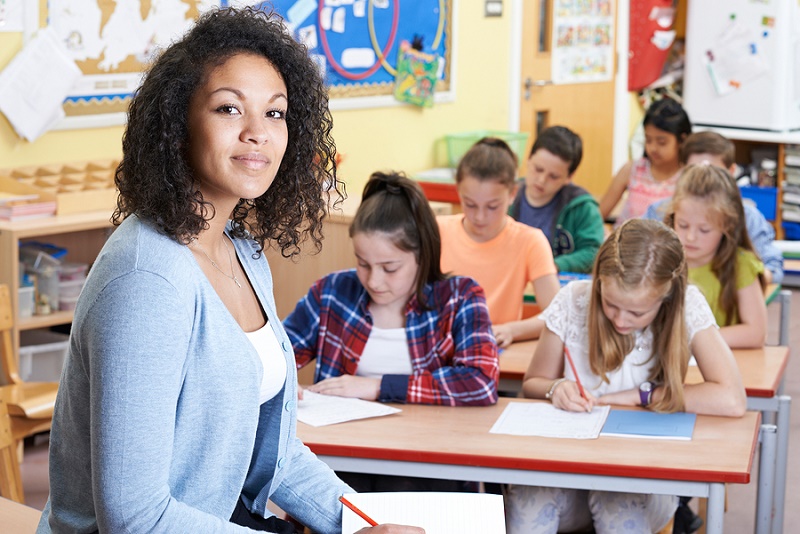
In a large group such as the class, the interaction schemes are very complex, but it is relatively easy to appreciate the existing amount of the same. Agree that it is the largest possible, because with an increase in interaction increases the mutual sympathy of the students and their agreement in activities and feelings.
The interaction is verified through communication, the barriers that hinder it can explain the difficulty of a class in solving their internal problems, in finding their norms of behavior and in establishing the appropriate contact with the teacher. It is therefore advisable to create a good communications network within the class.
In traditional schools there used to be one-way communication, namely, from the teacher to the student, but not the other way around. This not only engendered apathy and fear in the students, but deprived the teacher of information about the way in which his messages were captured by the receiving students. When there is feedback (the possibility of students issuing, in turn, information to the teacher) there are positive effects, such as an increase in attention in the students and their interest in the task that is proposed.
In the affective field the effects are even more remarkable. If the teacher adopts an attitude that is not pleasant to the students and they have the possibility to tell him, this communication is cathartic and, therefore, unloads the hostility of the students, who, by this same fact, will feel more tolerant with respect to the teacher. It will always be negative to deprive students of any possibility of expression.
The more numerous a class is, the fewer possibilities students have to intervene, thus diminishing their liking not only for common discussions, but also for the group itself. In these classes there are students who feel inhibited to express themselves, with this the cohesion of the group that splits into subgroups decreases.
The interaction increases when students can see each other. Therefore, the classic provision of seats in our schools favors individual work, but not teamwork or interaction. Shy students will express themselves more easily if they are in the front row.
6. DISCIPLINE IN THE CLASSROOM
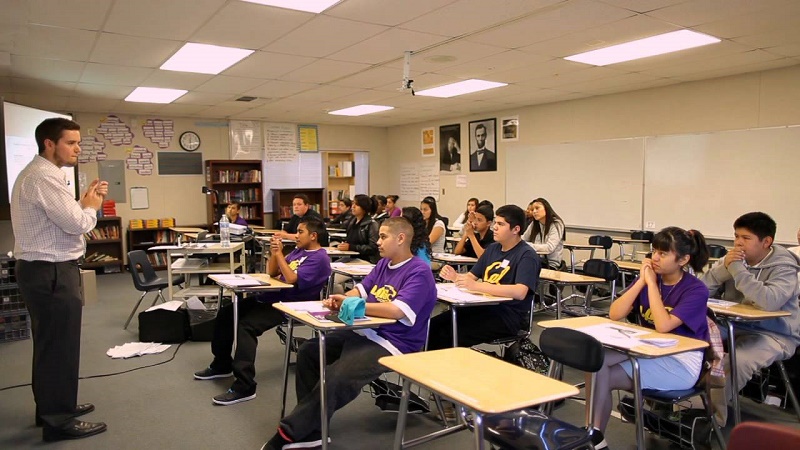
Currently, discipline is one of the main problems that we find in our classrooms. We can differentiate different educational strategies to face these situations:
Behavioral character strategies:
– Record of observations.
– Determination of reinforcements and analysis of teacher reactions.
– Modification of unwanted behaviors.
– Types of rewards in class: immaterial, material, chip economy, contingency contracts, etc.
– Types of punishments in class: time-out, the cost of response, the law of natural consequences.
– Negative reinforcement (withdrawal of punishment).
Cognitivist strategies:
– Motivation, interest and vital objectives.
– Locus of control and self-direction (attribution system).
– The demon effect and the self-fulfilling prophecy.
– Self – presentation.
– Other cognitive factors, etc.
Strategies and techniques for classroom management:
– Standards for the teacher: punctuality, good preparation, quickly get to task, insist on the collaboration of the whole class, effective use of the word, stay alert to the incidences of the class, analyze what is happening in class, strategies clear and well understood to face crisis situations, fair and equitable distribution of teacher attention, avoid comparisons, keep up-to-date notes, keep promises, make good use of questions, etc …
– Lesson planning: qualified teaching.
– Structures of authority and support within the school: counseling and guidance network.
CONCLUSIONS
We consider the topic of strategies for the management of the class a basic aspect in the teaching performance, and a means to reach that long-awaited quality education, individualized attention and other objectives pursued by our reform of the Educational System.


